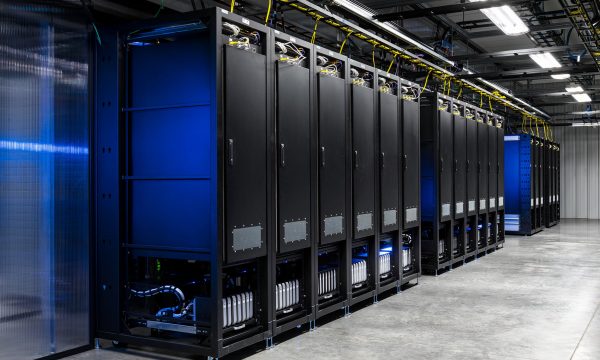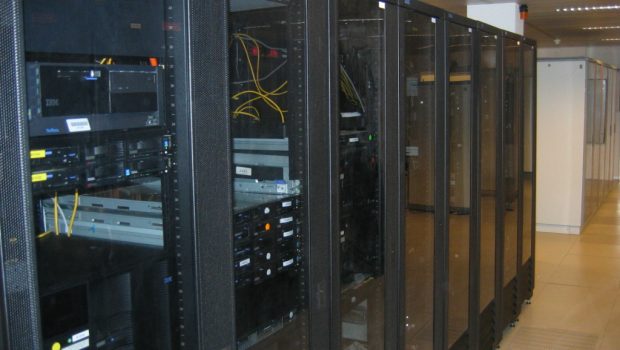Keeping the Largest Data Centres From Overheating
It’s not an understatement to say we’re more reliant on the digital world than ever! We spend an average of 6 hours and 42 minutes online every day. During that time, we want to access information and goods quicker, sharper, and cheaper than yesterday. In fact, in this day and age, you’d be hard pressed to find someone who doesn’t use the internet to some degree. Yet, despite how we all use the internet, not many of us consider it a physical object that needs maintenance.
The cloud isn’t, well, in the clouds! Huge data centres across the world keep our digital world connected and powered — the biggest of which reportedly consumes enough energy to power a city with a population of 1 million. These data centres are crucial for us to stream videos, download music, and post on social media. If they crash, sudden outages quickly spark irritation from customers, as British Airways found out in 2017 when a worldwide IT failure of their systems lead to flight cancellations and delays over a bank holiday weekend. The data centre failure was attributed by the CEO of British Airways to a power surge and a back-up failure, but UK Power Networks denied any power issues in the area that would have caused this.
Speculation points to overheating as the cause of this massive IT failure. The British Airways data centres were built in the 1980s and were not built with today’s huge internet usage in mind. As a result, the building is not equipped to deal with the excessive heat generated by this day and age’s data usage. Thus, the equipment shut down to protect itself from the heat.

Global IT failures are a nightmare for users and companies alike. Back in 2013, overheating shut down IT kingpin Microsoft’s data centre for a whopping 16 hours. As the saying goes, it can happen to the best of us! So, what measures do the world’s biggest data centres take to ensure their servers don’t overheat?
Heat
Whenever something uses energy, heat is generated as a waste product. Greenpeace’s Click Clean 2016 report outlines that the IT sector consumes around 7% of the world’s electricity, with this expected to triple between 2016 and 2020. There is a lot of pressure on IT companies to avoid the use of ‘dirty energy’ and commit to renewable energy; three tech giants committed to 100% renewably powered internet in 2012 (Apple, Google, and Facebook). But at the same time, these companies need to find a way to deal with the heat produced as a waste product, and their method of addressing this needs to be eco-friendly too.
Data centres need to run efficiently as well as sustainably. EkkoSense ran a study on 128 data centres in the UK and found 78% of them were running too hot. Data centres that are running too hot are, potentially, consuming too much energy or not using the energy efficiently, so it is a cause for concern. Plus, as outlined above, overheating can cause a complete shutdown of servers, impacting users around the world, or even data or equipment loss.
The need for air conditioning
The largest data centres in the world deploy a number of tactics to keep temperatures regulated. Obviously, commercial air conditioner systems are frequently used to maintain optimum temperatures. A commonly used technique, explains Daikin, is to utilise heat recovery technology, which uses the heat expelled during the process of cooling to heat offices and water supplies. Another technique is to have system installed that uses cold air from outside whenever possible, reducing the energy consumption of the air conditioning units as they switch off in the meantime. This is known as ‘free cooling’.
Using the ocean
Google and Microsoft have been known to look to nature for help. In 2011, Google housed a data centre in a building in Finland that uses cold seawater to cool the facility. Prior to Google’s purchase of the building, it was a paper mill that had a massive tunnel constructed beneath it, running under the building and into the Gulf. The tunnel is now used to connect the seawater to their cooling system in a no-energy free-flow system, and the water is returned back to the Gulf cleaner than when it went in.
According to the Huffington Post, Microsoft even went as far as putting an entire data centre in the sea! The idea is, of course, the same in principle to Google’s use of cold seawater — the cold seawater off the coast of Scotland where it has been dropped will keep the centre cool. The project is touted to be powered by nothing but renewable energy and cooled by the ocean, so its impact on the environment is absolutely minimal.
Waste not
The waste heat generated by data centres doesn’t have to be a problem. Instead of regarding the heat as a waste product, some companies, such as tech mogul Apple and air conditioning unit supplier Daikin, have used the heat generated by data centres as a means to heat other parts of the building, or even to help provide hot water. For some, this heat recycling is used within the same building, where others have captured the heat to send back into the community’s heating of offices or homes.
As consumer demand increases, so too will the need for larger data centres. Keeping them running efficiently is vital to support the consumer and business needs, so effective cooling methods are priceless. Whether by using traditional air conditioning, or something a little more unusual like complete ocean-submersion, we’ll no doubt see cooling methods for data centres develop as rapidly as the technology they power!
Article credits:
This article was researched by air conditioning unit supplier Daikin and written by Giulia Kapp.















